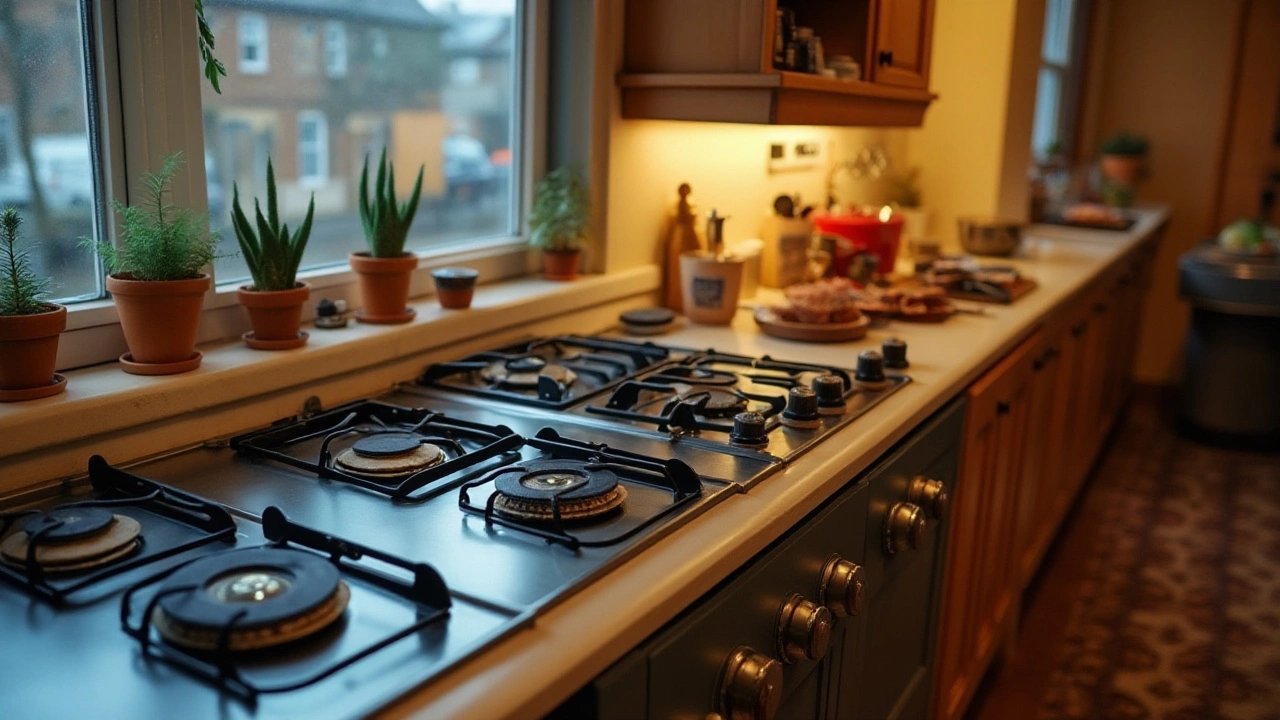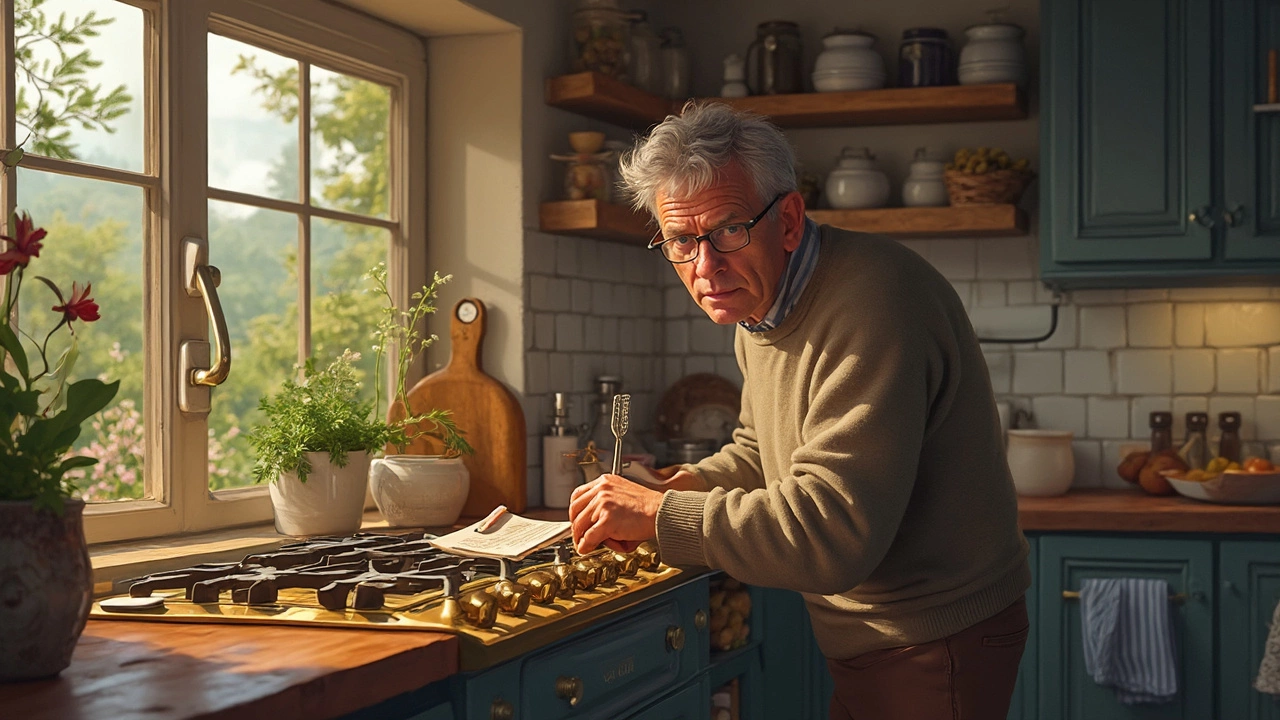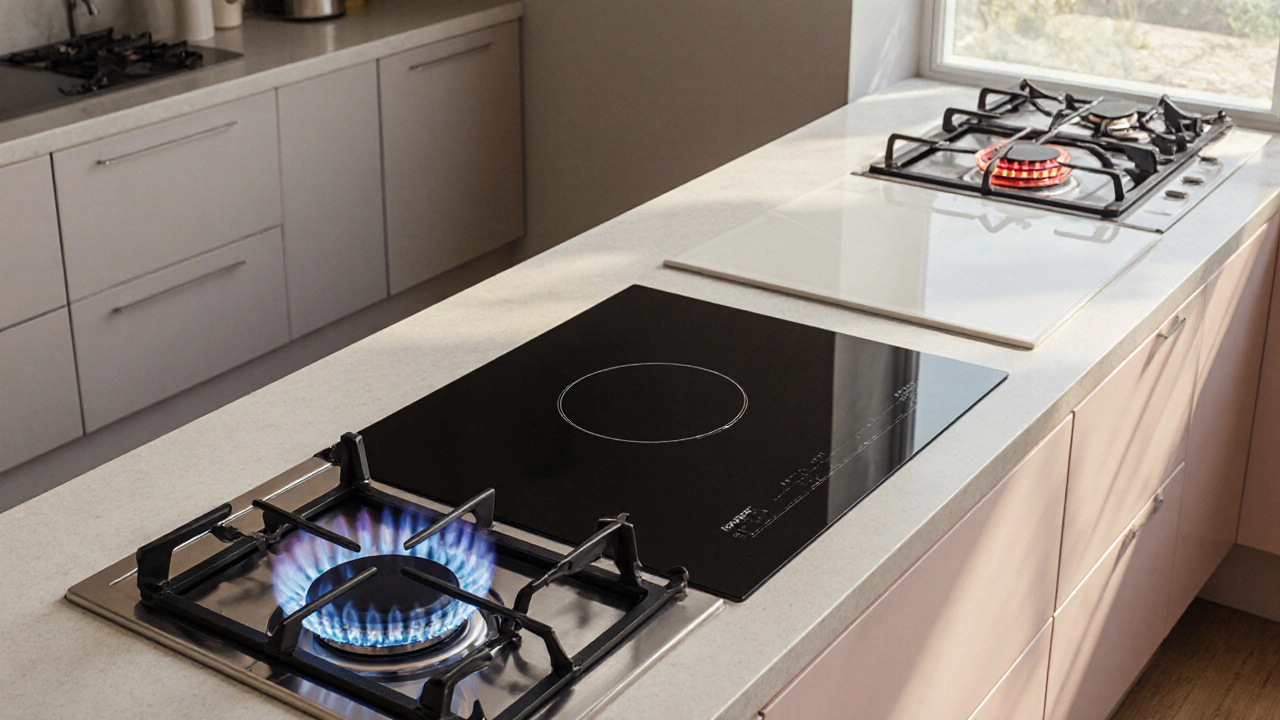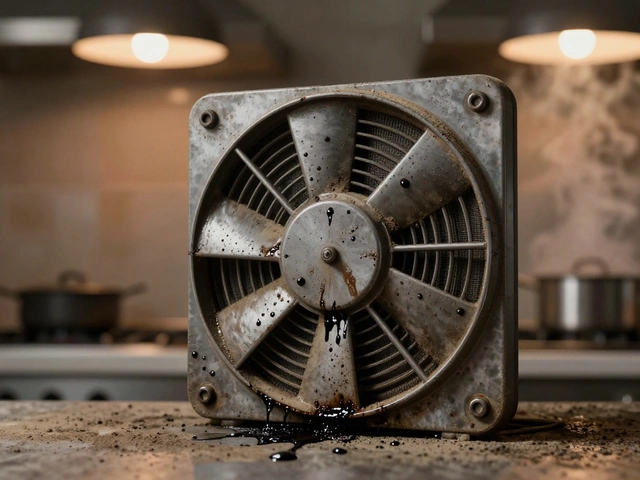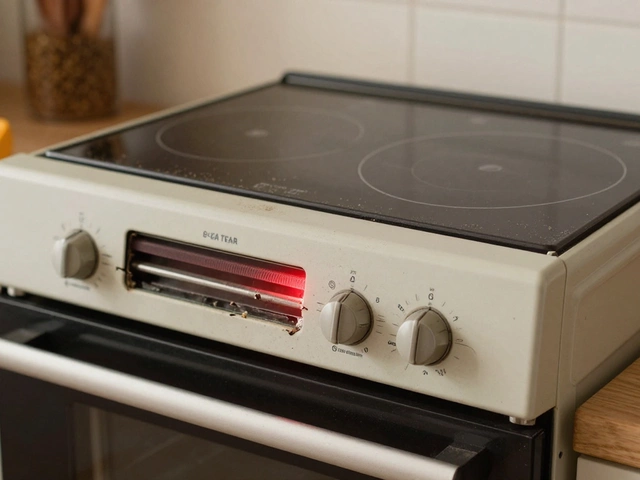In the bustling heart of every home, the kitchen, the humble hob stands as a steadfast ally. Many wonder about the longevity of this essential appliance. Understanding its lifespan isn't just a matter of numbers; it's about knowing how to squeeze out every ounce of reliability and performance.
Hobs, much like the hands of a clock, quietly tick away through the years, making meal prep seamless. But at what point should their lasting journey become our concern? Whether you're cranking up cerulean flames or meticulously setting induction levels, the journey of your hob deserves attention.
From recognizing wear and tear to understanding the virtues of routine maintenance, this guide will help ensure your hob stands the test of time. Keep your culinary companion in prime condition, ensuring that those delightful sizzles and boils remain a consistent part of your mealtime melodies.
- Understanding Hob Lifespan
- Factors Affecting Hob Durability
- Types of Hobs and Their Longevity
- Maintenance Tips for Prolonging Life
- When to Repair or Replace Your Hob
Understanding Hob Lifespan
When it comes to kitchen appliances, a hob isn't just a purchase; it's an investment in everyday convenience. But how long should a hob last before it shows signs of fatigue? Typically, a good-quality hob boasts a lifespan ranging between 10 to 15 years. Of course, this is influenced by factors such as the frequency of use and the care it receives over time. To dive deep into this topic, explore the variations among different types of hobs—be it gas, electric, ceramic, or induction—and how they compare in terms of longevity. Interestingly, gas hobs often outlast their electric counterparts, mainly because they don't rely on electrical components that can degrade over time.
Historically speaking, innovations in hob technology have significantly lengthened their service life. For instance, the rise of induction hobs has brought about a shift towards energy efficiency and reduced wear on components. Induction hobs transfer heat directly to the cookware, minimizing energy loss and component stress. However, this type of hob is relatively new compared to others, so observing its lifespan firsthand is something many homeowners are eagerly anticipating. A relevant study from the Home Appliance Manufacturers’ Association revealed that proper maintenance can extend an appliance's life by up to 20%, an eye-opener for those looking to keep their hobs functional well into the decades ahead.
"The lifespan of a hob isn't just determined by its build quality, but also by how the user maintains it over time," noted appliance expert, Sarah Jenkins, during a recent symposium on household appliance trends. This observation sheds light on the importance of regular upkeep to prolong hob lifespan.
Maintenance plays a massive role in the life expectancy of a hob. Regular cleaning is essential, especially since food residues can corrode surfaces or block gas outlets. Using specific cleaning agents designed for particular hob types not only preserves their shine but also enhances functionality. More interesting still, ceramic hobs are known to be particularly susceptible to surface scratches, which can shorten their usable life if not handled with care. But with the right cleaning methods and protection, they can remain sleek and operational for years beyond the norm.
Moreover, external influences such as power surges or gas supply issues can significantly impact the lifespan of a hob. Investing in surge protectors or ensuring regular checks of gas installations can mitigate risks related to sudden failures or damage. And let's not forget the role of user habits; aggressive cooking styles or using incompatible cookware often lead to premature wear and tear. For instance, using heavy iron pots on a delicate ceramic surface can lead to cracks, necessitating costly replacements way before the hob reaches the end of its natural life cycle.
Understanding a hob's lifecycle can significantly help owners make informed decisions about its usage and maintenance routines. Knowing the ins and outs of your appliance, along with some smart preventative measures, sets the stage not just for extending the life of your hob but also for ensuring that it performs optimally. With conscientious care and regular assessments, your trusted kitchen companion can outlive expectations, delivering delicious delights well into the future. For those passionate about cooking, that's a promise worth every thoughtful effort.
Factors Affecting Hob Durability
The lifespan of your hob is not merely a function of time but also of various other elements that play a significant role in determining how long this indispensable kitchen tool will serve you. At the forefront is the hob type. Whether it's induction, ceramic, gas, or a traditional electric model, each comes with its unique set of characteristics that influence durability. For instance, gas hobs, well-regarded for their quick heat control, often have less longevity compared to induction hobs renowned for their robust glass-ceramic surfaces. Additionally, the frequency of use substantially impacts durability. A hob employed sporadically will generally surpass one in constant operation. Think of the regularity of Sunday family feasts compared to daily marathon meals; the wear and tear differ substantially.
Another pivotal factor is the quality and brand of the hob itself. Established and reputable brands often offer appliances constructed from higher-quality materials, which potentially translates to longer life spans. It's akin to choosing between a fleeting trend and a classic piece of craftsmanship that stands tall against the tides of time. Regular upkeep cannot be overstressed, though. Proper cleaning techniques and timely maintenance checks stand as countermeasures against the gradual decline. Surprisingly, ignoring simple practices like wiping spills promptly or ensuring burners are residue-free can lead to premature failure. Within that context, it’s not just about cleaning but doing it right—avoiding abrasive materials that might scratch surfaces, thereby compromising their integrity.
Environmental factors, too, leave their mark, sometimes literally. Kitchens with higher moisture levels could harbor environments conducive to rust on gas hobs, whereas particles from vented oils might gather insidiously around burners and control knobs over time. Placement and ventilation play equally consequential roles. A well-ventilated kitchen minimizes heat build-up around the hob, reducing thermal stress. In the words of appliance expert James Holden, as cited in Kitchen Times, "A hob placed in a poorly ventilated corner might struggle prematurely with overheating."
Looking at it statistically, a study illustrated that maintenance costs within the first five years of a hob's life account for only 10% of total costs, yet this preventive expenditure might prolong its life by up to 20%. Maintenance isn't merely a chore; it's an investment in years of reliable service. Intuitively, adherence to manufacturer's guidelines furthers durability. Consulting the manual ensures that you’re not inadvertently diminishing your appliance's life through misuse. Therefore, understanding the intricate interplay of factors affecting hob durability is pivotal to ensure its longevity and reliability, transforming it from a mere kitchen component to a cherished culinary partner.
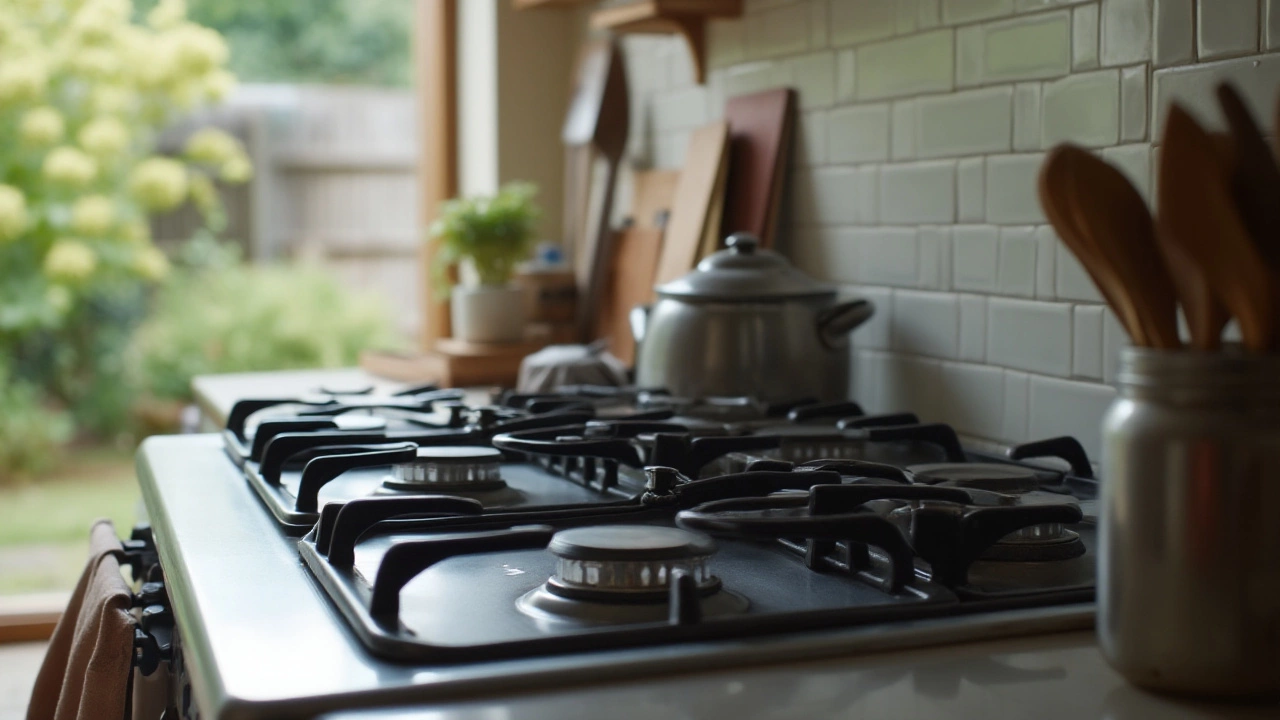
Types of Hobs and Their Longevity
The marketplace of kitchen hobs offers a generous array of choices, each with its unique characteristics and longevity. The lifespan of these appliances can be as varied as the flavors they help create in your meals. Let's dive into the world of hobs and explore how different types can impact their durability and performance.
Gas hobs are a classic choice, revered for their responsive heat adjustment and reliability. They typically last between 10 to 15 years, often outstripping their counterparts when properly maintained. The longevity of gas hobs is greatly influenced by the quality of installation and the frequency of cleaning, as grease buildup can sideline efficiency. A well-maintained gas hob becomes an enduring fixture in many kitchens, serving as a testament to traditional cooking methods that many cherish. Users often note the universal appeal of open-flame cooking, allowing for a seamless transition between varying heat levels and contributing to a longer lifespan.
In contrast, electric hobs offer a more modern twist to culinary practices. Known for their sleek and smooth surfaces, these hobs are easier to clean but can be less durable than gas ones, averagely lasting around 8 to 12 years. The solid plates heat up gradually, which may cause some users to find them less efficient over time, especially if extensive wear causes heat to become inconsistent. Yet, the benefit lies in the diverse designs and accessibility, providing a staple for those who prioritize convenience and modern styling.
Induction hobs are the epitome of innovation in kitchen technology, admired for their energy efficiency and safety features. With magnetic technology at their core, these hobs don't just look futuristic, but they also promise longevity in the range of 12 to 15 years. An induction hob's durability is tied to the proper usage of compatible cookware that ensures magnetic properties perfectly interact for optimal performance. Interestingly, induction hobs not only provide efficiency but also security, as the surface remains cooler to touch, reducing the risk of burns.
Ceramic hobs, while similar to induction models in design, operate using electric currents beneath their glass surface. They share a comparable lifespan of about 10 to 15 years when maintained correctly. Ceramic models often require meticulous upkeep to avoid scratches that can affect efficiency and aesthetics. Consumer preferences sway towards ceramic hobs for their balance of functionality and aesthetic appeal, making them a coveted choice despite the necessity for gentle handling.
Around the culinary world, there’s a growing demand for technologically advanced options. A senior analyst at Kitchen Tech Hub claimed,
"The future of hobs lies in smart technology integration, offering users unprecedented levels of control and efficiency."With smart hobs entering the market, they might shift expectations around hob longevity and efficiency even more. As technology and kitchen dynamics evolve, so do these steadfast cooking companions, guiding our culinary adventures while promising years of faithful service if treated with the respect and care they deserve.
Maintenance Tips for Prolonging Life
Keeping your hob in pristine condition requires more than just sporadic cleaning. It's about embracing a routine of thoughtful care and attention to detail, helping extend the appliance's lifespan. To start with, understanding the type of hob you're working with is crucial. Whether it’s electric, ceramic, or gas, each kind demands its own specific care regimen. Electric hobs benefit from regular surface cleaning to avoid accumulation of residue that can interfere with the heating elements. Ceramic hobs, on the other hand, require gentle handling as they can scratch easily. Meanwhile, gas hobs need routine checks to ensure that burners are clear of debris.
An often overlooked but vital aspect is maintaining the cleanliness of the knobs and controls. These are frequently exposed to grease and require regular wiping with a lightly damp cloth. Ensuring these parts work smoothly is key to effective cooking, and prevents the risk of malfunction due to sticking or corrosion. Another tip is to be mindful of any loose components. Tightening screws and fittings can prevent larger problems down the line, saving both hassle and potential repair costs.
Regular Cleaning Techniques
A simple kitchen vinegar solution is a powerful ally against grime. Mixing equal parts of water and vinegar, and using it to clean your hob, can dissolve stubborn stains without harsh chemicals. For tougher spots, a paste made from baking soda and water can be used. Leaving the paste on burnt-on stains for a few minutes before wiping away can prove extremely effective. However, it's important to avoid abrasive pads that can damage the surface of your hob.
"Proper maintenance not only extends the life of your appliances but also enhances safety and efficiency in your kitchen," says noted home appliance expert John Carver.
Besides cleaning, regular inspection is essential. Checking the appliance for any signs of wear, such as discoloration or damage to the heating elements or gas nozzles, helps nip potential issues in the bud. Should any part look suspicious, it's advised to consult the manufacturer's guidelines or seek professional advice to prevent voiding your warranty.
Lubricate Moving Parts
For gas hobs, ensuring that all vents and openings are unclogged extends the life of the burners and ensures an even flame. Lubricating any moving parts, like knobs or switches, with a small dab of machine oil can keep them functioning smoothly. Often, the gradual wear on these small parts can lead to more significant issues if left unattended. Regular lubrication prevents accumulation of rust and ensures fluid operation over the years. A gentle monthly routine ensures these elements continue to perform their functions harmoniously.
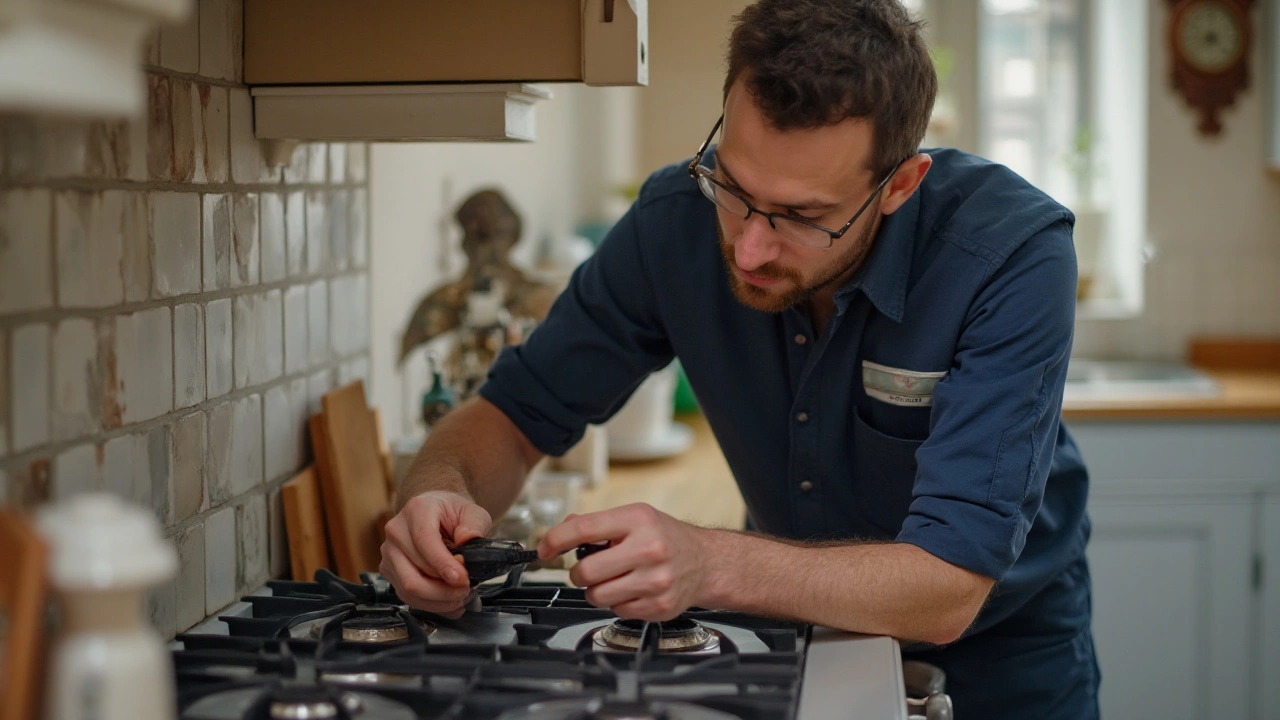
When to Repair or Replace Your Hob
The decision to repair or replace your hob can sometimes feel like standing at a culinary crossroads. Knowing when to take action is crucial in avoiding unnecessary expenses and ensuring your kitchen's functionality. Signs of malfunction can range from minor issues to significant failures. It’s vital to figure out when these issues are minor enough to warrant a repair or when they are a red flag signaling the need for a replacement. Various factors influence this decision, including cost, age, and the specific type of problem affecting your hob.
Perhaps your hob's burners are no longer as efficient, or you notice they're leaving certain spots undercooked. This uneven heating can often be resolved with a simple repair, like cleaning the burners or replacing worn-out components. For electric hobs, malfunctioning controls or faulty wiring could require professional attention. But not every problem is a quick fix; sometimes, they're indicators that a replacement might be a more viable option. Hob lifespan can heavily influence this choice. Gas hobs usually last longer than their electric counterparts, accounting for a more extended duty cycle. However, you're likely wasting money if repairs cost almost as much as buying a new hob.
Age is another major factor. A typical hob lifespan ranges from 10 to 15 years, depending on how it's used and maintained. If your hob is nearing the end of its expected lifespan, a new purchase could save you from multiple service calls. For newer versions, a minor malfunction might justify a repair to prolong its lifespan. On the flip side, an older hob that frequently malfunctions might indicate that the accumulation of issues is undermining its reliability, possibly signaling that it’s time for an upgrade.
There’s also the matter of efficiency and technology. Modern hobs offer improved energy efficiency and new functionalities that old models may lack. If your older hob is causing your energy bills to spike, the upfront cost of a new, efficient model could eventually pay off. A quote from a reputable appliance expert reads:
"Investing in new technology can cut energy costs in half while providing a superior cooking experience."It’s not just about today’s costs, but what you might save in the future by upgrading.
To make the right call, carefully weigh the repair costs against the purchase of a new hob. Consider the frequency and severity of the issues you're facing. Always consult with a qualified technician who can adequately assess the costs associated with repairs and help determine whether a replacement could be a more sound long-term investment. When your hob repair no longer offers an economical solution, stepping into the world of modern kitchen technology might just be the upgrade your culinary space needs.
